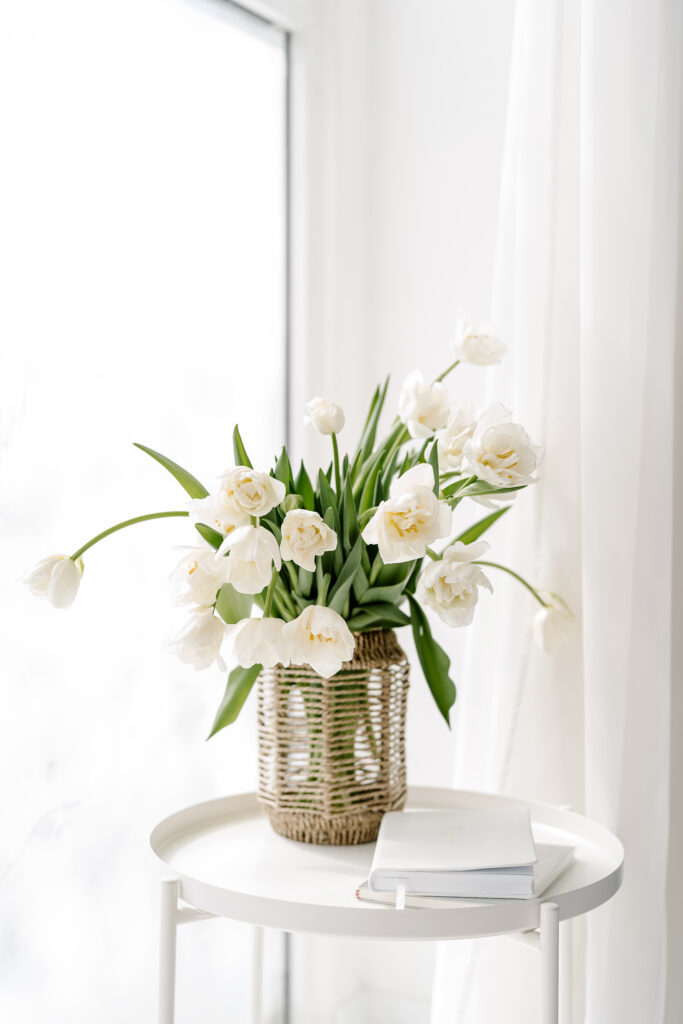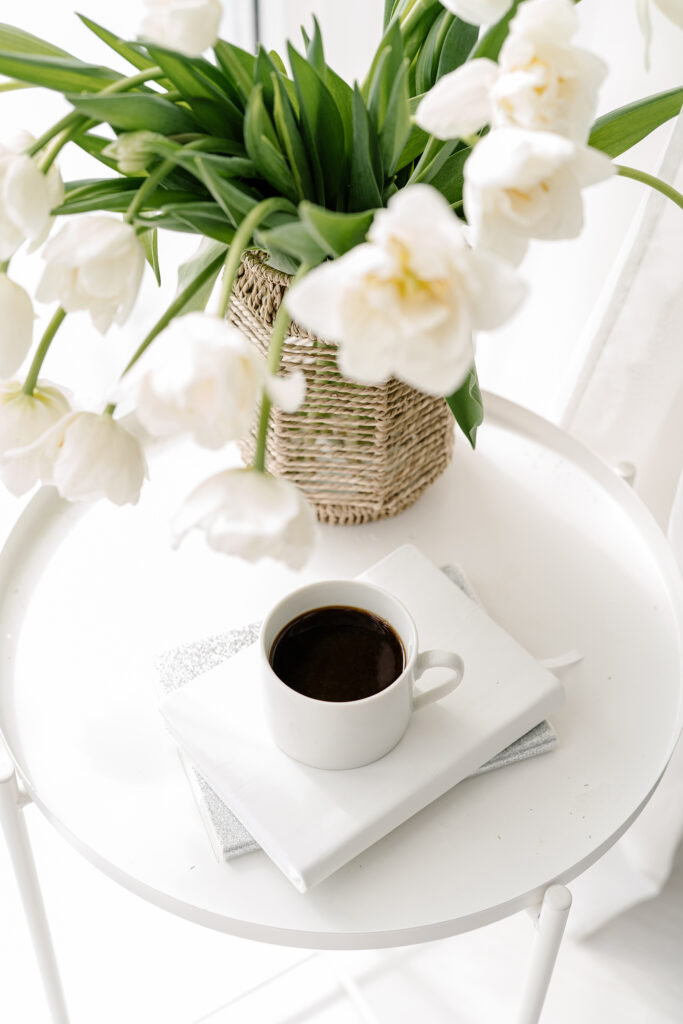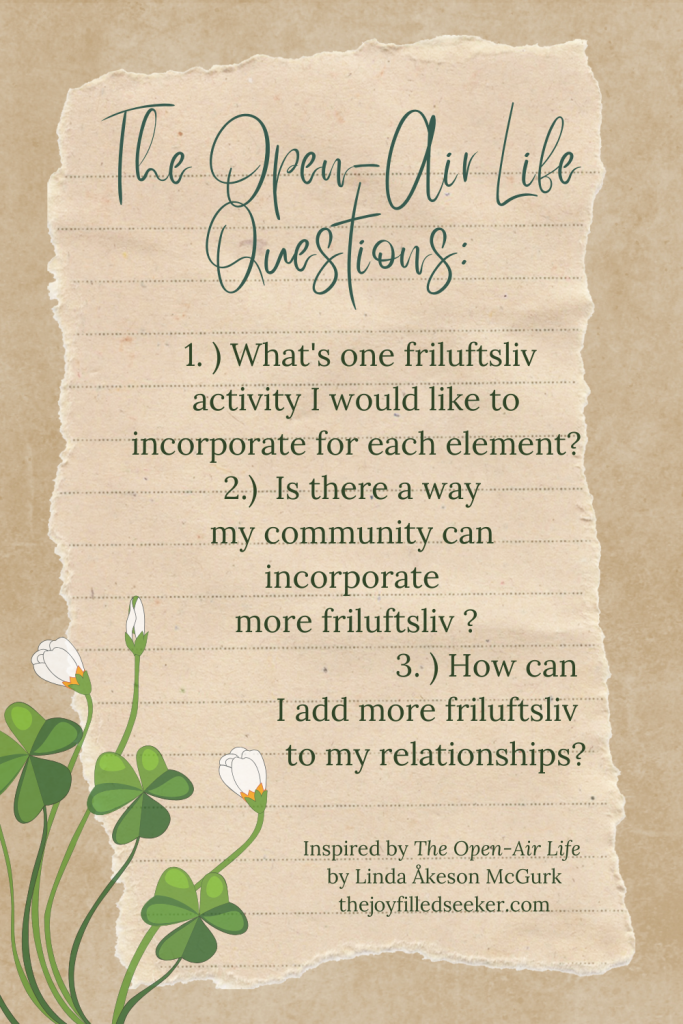THIS POST MAY CONTAIN AFFILIATE LINKS, MEANING I GET A COMMISSION IF YOU DECIDE TO MAKE A PURCHASE THROUGH MY LINKS, AT NO COST TO YOU. PLEASE READ MY POLICIES FOR MORE INFO. As an Amazon Associate I earn from qualifying purchases. These posts/resources are also not a substitute for medical/professional advice. Please seek professional help if you feel you or someone you know needs it. Read more in my disclaimer on the policies page located in footer of the website.
With March having the first day of spring, World Water Day, and all the little subtle signs of the season changing, this is a great month to read this month’s joy book. Keep reading to learn more about it!

Introducing the Book
As a lover of the Scandinavian term of hygge, I was thrilled to discover the book, The Open-Air Life, which is all about another Scandinavian term called friluftsliv.
Like many definitions for complex terms, there is no one definition for friluftsliv. However, friluftsliv is defined by Linda Åkeson McGurk (author of The Open Air Life) to mean the following,
“Friluftsliv, or open-air life, is where humans and nature intersect and the values that we create in those meetings. Simply put, it’s a way to nurture a personal relationship with nature through direct experiences.” – Linda Åkeson McGurk, The Open-Air Life
What does this actually look like? For me, I interpret it as simply making an effort to be and enjoy the great outdoors. Whether this be through going for a hike, going camping, having a bonfire, going snowshoeing, etc. It’s just important to remember one critical element of friluftsliv that Åkeson McGurk mentions: it must be “noncompetitive and nonmotorized”.
In a world where we are increasingly tuned into the news, tapped into social media, and living more in cities/urban areas, we are all starting to lose contact with nature simply by our spending less time in it.
The Open-Air Life reminds us of the beauty that comes into our lives when we reconnect ourselves once again with nature, and it simply makes you want to go out and experience Mother Nature!
“Just like there is slow food, slow parenting, and slow entertainment, friluftsliv is a form of slow nature. It’s about embracing simplicity, resisting consumerism, and living in a way that is sustainable to both ourselves and the planet. It’s the kind of life that transcends generations and connects us deeply with the land that sustains us. And it is in every respect a rich life.” -Linda Åkeson McGurk, The Open-Air Life

Questions to Ask Yourself
While you read the book this month, consider these questions. I’m personally not a person who uses guided reading questions—feels a little too school-y for when you are reading for fun! I kept that in mind when developing these questions with the intention and hope they are useful and fun to think about!

A Final Note on Joy
Nature is so incredibly healing. It’s ability to transmute our stress, worry, anger, etc. into pure inner joy is a wonder all on its own.
As the great naturalist, John Muir once said,
“I only went out for a walk, and finally concluded to stay out till sundown, for going out, I found, was really going in.” -John Muir
Personally, getting outside was one of my most relied-upon tools when healing from rock bottom, and it is still one of my most important tools today when living a life tapped into my own inner joy. Being outside settles me, it gives me a whole new perspective and truly allows me to feel the stillness and exuberance of living from the place of my own joy.
With March being the month that we welcome springtime back into our lives, it is a fantastic month to reconnect yourself with the outdoors! You can certainly start small (try a walk in a local park for example!), but give it a try and see if your inner joy begins to shine through more. Mama Earth gives us so much, and helping us tap into our inner joy is certainly one of those things!
VIEW THE COMMENTS
Joyfilled Book Club: March’s Pick